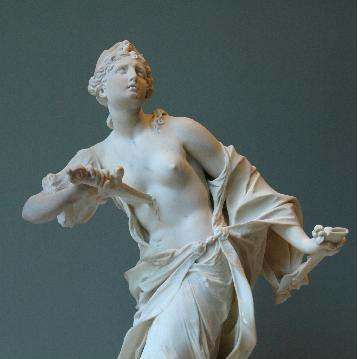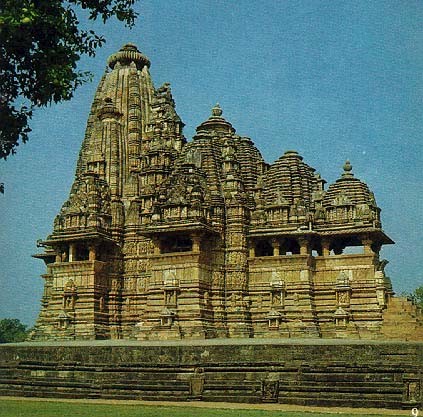
Of the three gods that are constitutive of the Hindu trinity, Vishnu (the Preserver) alone has avatars or incarnations. His principal counterpart, Shiva (the Destroyer), has offspring, such as Ganesh, but no avatars; Brahma (the Creator), meanwhile, ceased to have any importance with the passage of time, and today there is said to be only one Brahma temple in India, in the town of Pushkar in Rajasthan. The main lore about the avatars of Vishnu is to be found in the Puranas, though of course the Ramayana and the Mahabharata are critical sources for the two heroic avatars of Vishnu.
The idea of an avatar was distinct to Hinduism before a variation of it was introduced into Mahayana Buddhism, and it retains a pivotal role in Hindu theology and mythology. The idea of an avatar is predicated on the notion that from time to time, whenever evil or ignorance is on the increase, the Supreme Being must incarnate itself in some form, or descend to earth, so that the forces that stand for good might be reinforced. According to the Matsya Purana (47.32), "When the end of an Age rolls around and time has lost its strength, then Lord Vishnu is born among men. When the gods and demons go to war, then Hari [Vishnu] is born." Again, in the words of the Garuda Purana (1.13), "For the protection of his creation, the unborn, undying Vasudeva [another name for Vishnu] made various avataras", and (142.2): "When lord Hari descended in order to annihilate the law of the demons and to preserve the law of the Vedas and other laws . . . the unborn god assumed avataras." Though the word avatar is usually translated into English as "incarnation", and less often as "descent", an avatar can also be understood as an exemplar, as in the case of Rama, or as a vehicle for transmitting ideas to human beings; an avatar might also be viewed as an expression of God’s playfulness, wrath, or mere concern for human welfare – and as a warning. The Supreme Being (as Vishnu) might choose to incarnate itself in forms lower than humans, so that what the Greeks called the hubris or pride of man is checked; it might choose to manifest itself in forms – such as half man, half lion – that are incomprehensible from the standpoint of ordinary rationality, but that point to the animal tendencies within us, just as they suggest both that the enterprise of being human is always fraught with the most hazardous consequences, and that those forms of life which we habitually consider below us might have in them the intimations of divinity.
Vishnu is generally held to have ten incarnations, but the number ten is much less ‘traditional’ than is commonly believed. The Matsya Purana (47.32-52), for instance, enumerates twelve avatars, while the Garuda Purana (1.12-35) mentions twenty-two. TheBhagavata Purana likewise mentions twenty-two incarnations, but after enumerating them, it adds: "The incarnations of Vishnu are innumerable, like the rivulets flowing from an inexhaustible lake. Rishis, Manus, gods, sons of Manus, Prajapatis, are all portions of him." The ten incarnations of Vishnu take us from lower forms of evolution to divinities that appear in the guise of men. Though some might read in the narrative of the avatars a strict linear progression, the numerous texts belie such a mechanical interpretation. Vishnu is first said to have come down in the form of a fish (matsya), which saved the Vedas from being consumed by the asuras (demons), followed by a tortoise (kurma) and boar (varaha). In the form of a boar, Vishnu killed the mighty asura Hiranyaksha, whereupon the latter’s elder brother, Hiranyakashipu, swore to avenge his brother’s death. According to the Vishnu Purana, Hiranyakashipu practiced such immense austerities that the rivers and oceans trembled before him, the volcanoes spit fire, and the astral bodies went astray. Hiranyakashipu subjected his own son Prahlad, a devotee of Vishnu, to immense pain and suffering, and consequently Vishnu had to descend in the form of Narasimha, half-man and half-lion, to put an end to the demon’s life. These four incarnations are held to have appeared in the satya-yuga, or the first epoch of the world.
Bali, the chief of the Daityas or asuras in the treta-yuga, or the second age, had acquired immense powers on account of his austerities, and again Vishnu was approached by thedevas, who sought freedom from Bali’s tyrannical behavior. In the guise of a dwarf, Vamana, Vishnu appeared before Bali, who in his generosity agreed to grant the dwarf as much land as he could cover in three steps. Little did he know what Vamana was capable of doing: with his first two steps, he astrode the entire earth, heavens, and universe; and as Vamana had no place for placing his foot anywhere, he stepped on Bali’s forehead. In his sixth incarnation, Vishnu appeared as Parasurama, or "Rama with the axe", armed with the mission of liberating the Brahmins from the yoke of the Kshatriyas. The seventh, eighth, and ninth avatars of Vishnu suggest the heroic, and to some degree, historic element. It is quite likely that Rama was a local hero, who was ultimately elevated to the status of a divinity; and in the Ramayana, which celebrates his exploits, he is described as an avatara of Vishnu who had perforce to kill the demon-king, Ravana. Krishna, the eighth avatara, was similarly most likely a hero or minor king at first, and in the Mahabharata he is described as a prince of the Yadava clan. He was eventually absorbed into the pantheon of Vishnu’s avatars, but assumed such importance that he was taken to be the Supreme Being himself. The Buddha appears as the ninth avatar, according to the puranas, and some scholars have pointed to this as an illustration of the tendency within Hinduism to absorb its rivals. Finally, the tenth avatar is yet to appear at the end of the present or kali-yuga: it is represented as Kalki, a figure seated on a white horse, with a drawn sword flashing away, cutting at the forces of evil.


















